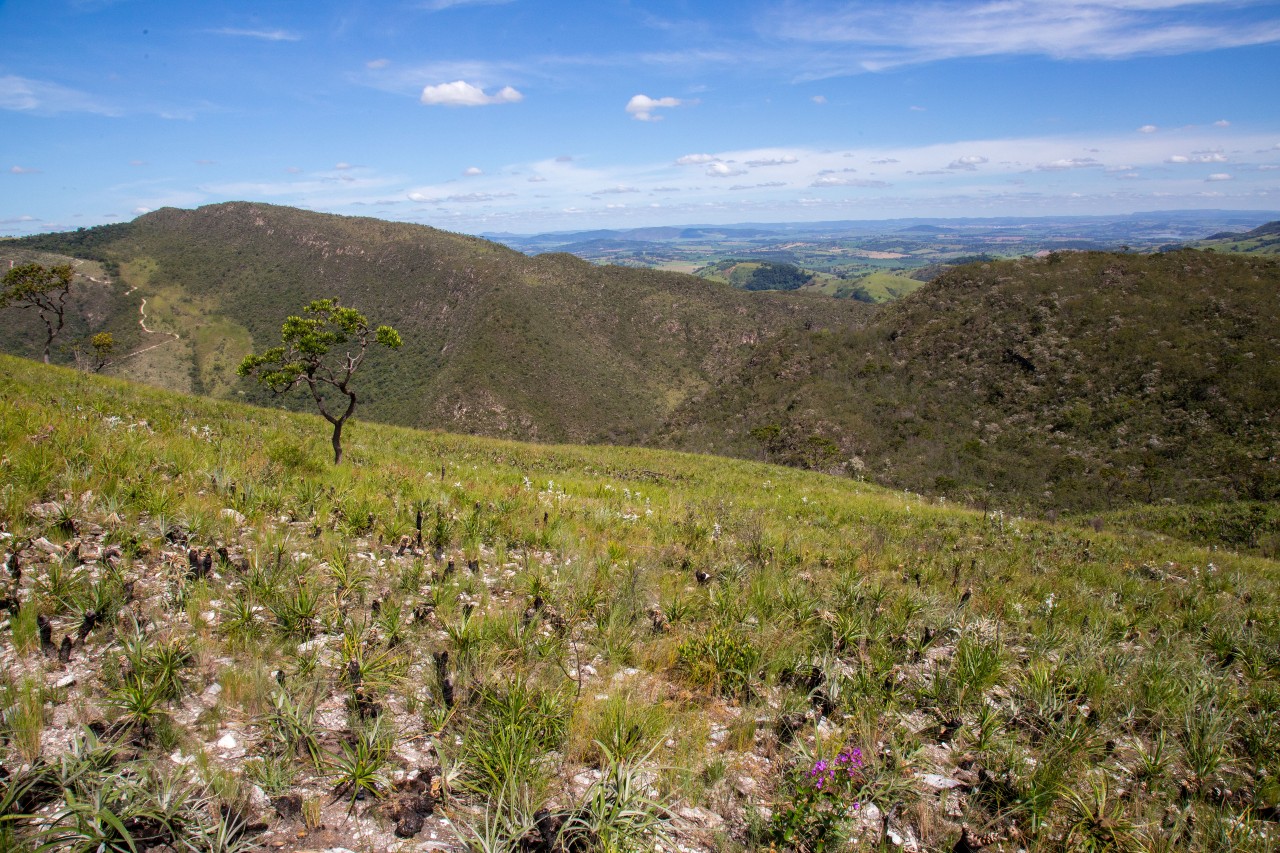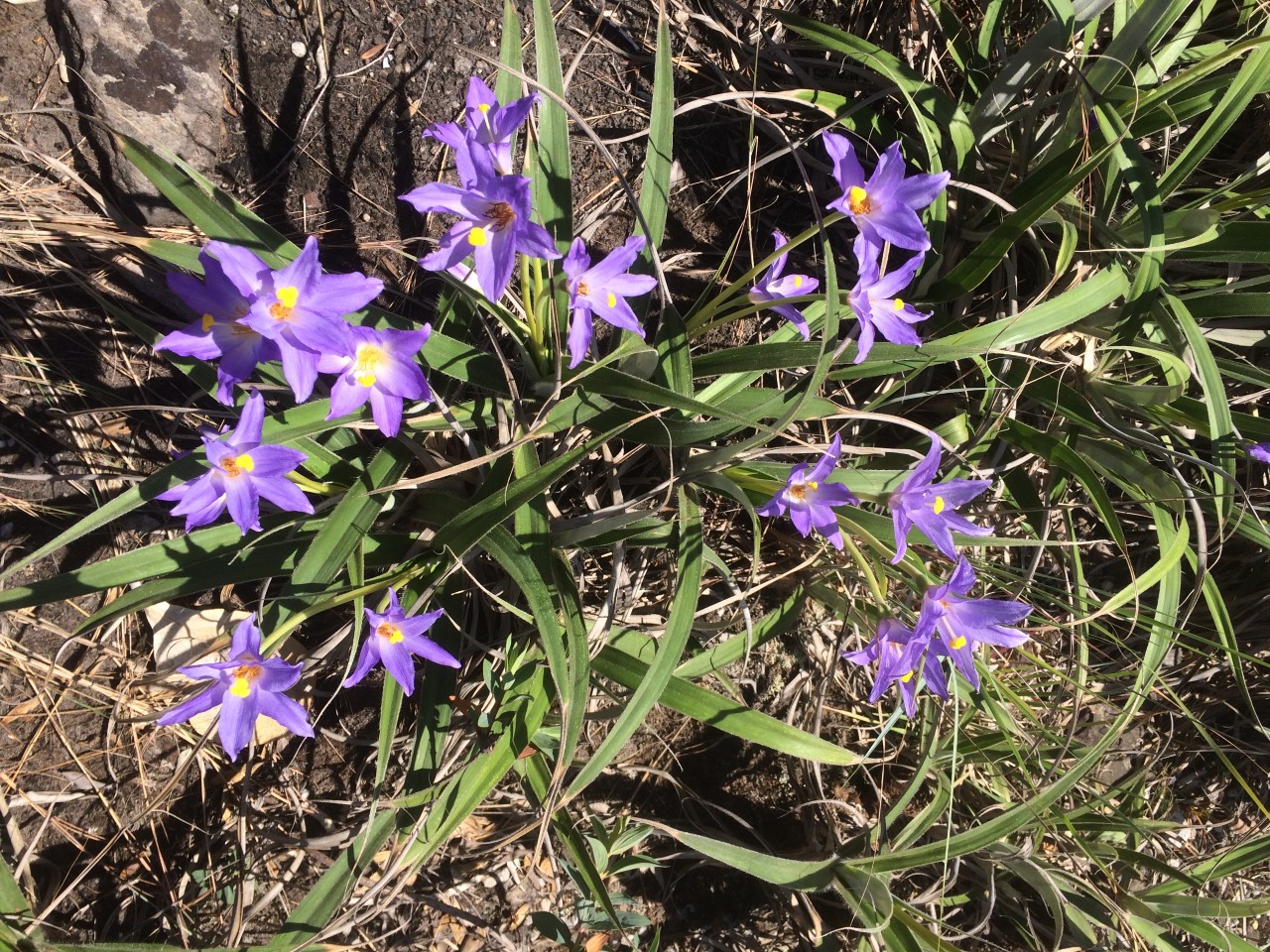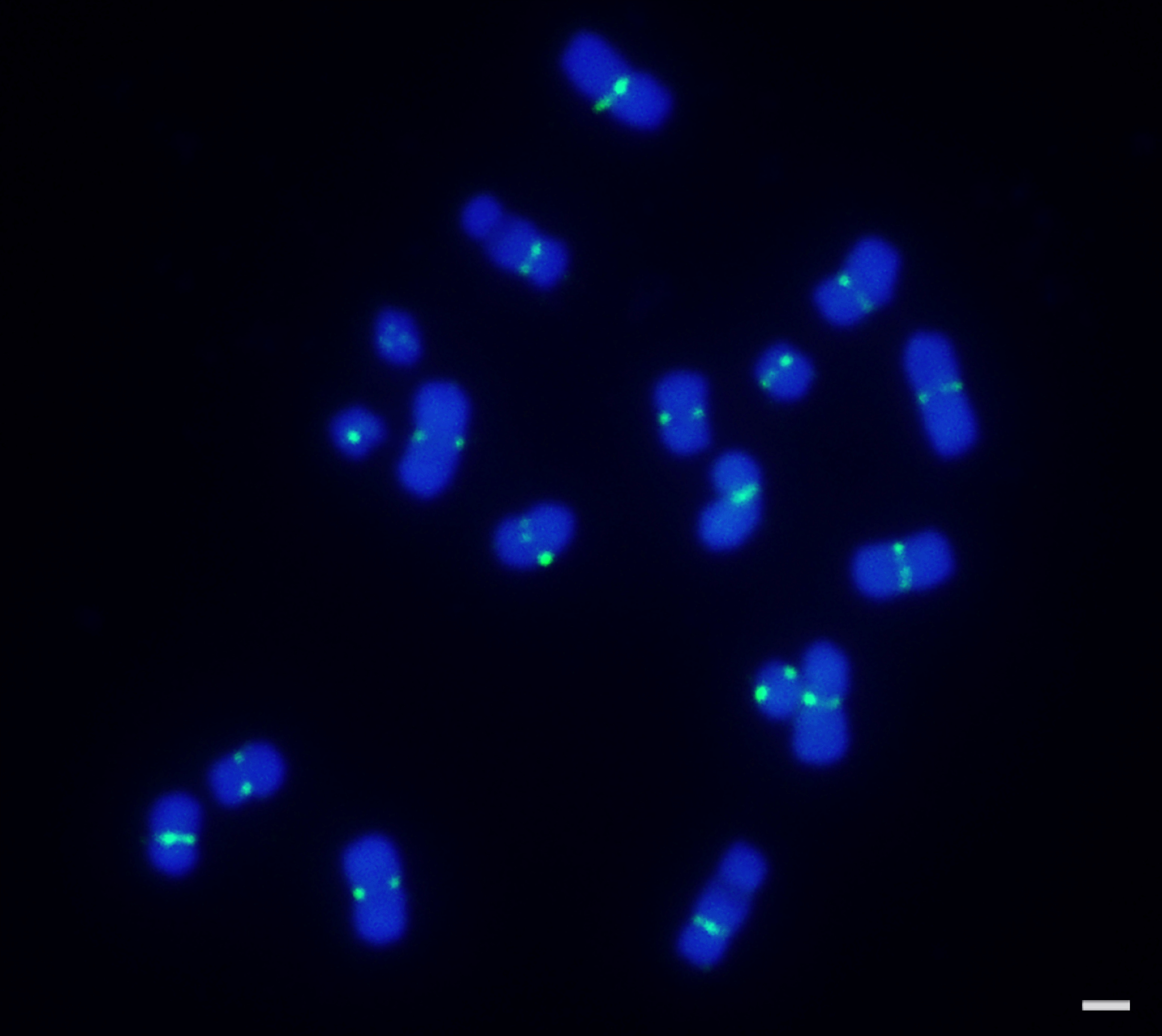


The rupestrian grasslands are one of Brazil’s most biodiverse and threatened ecosystems (photo: Rafael Soares)
Published on 06/25/2025
Agência FAPESP* – Researchers from the Genomics for Climate Change Research Center (GCCRC) have determined with unprecedented precision the chromosome number of the iconic velozias of the rupestrian grasslands – a montane savannah ecoregion from Brazil, commonly known as campos rupestres –, resolving a genetic uncertainty that had persisted for decades. The study was published in the Brazilian Journal of Botany.
Rupestrian grasslands are found primarily in the Cerrado, Brazil’s savannah-like biome. They represent one of Brazil’s most biodiverse and threatened ecosystems, home to species that are highly adapted to extreme conditions. Among them, those of the genus Vellozia are characterized by their resistance to drought and poor soils, making them targets for molecular studies to understand these traits.

Plant of the species Vellozia nivea (photo: Isabel Gerhardt)
Since the 1980s, researchers have been trying to determine the basic number of chromosomes in Vellozia species, but the results have always been controversial. Some studies have suggested nine, eight, or even seven chromosome pairs, depending on the species. Part of this confusion was due to the fact that some chromosomes were considered satellites – small structures attached to the main chromosomes that could be interpreted as accessories rather than true chromosomes.
Researchers from the GCCRC – an Engineering Research Center (ERC) created by FAPESP and the Brazilian Agricultural Research Corporation (EMBRAPA) at the State University of Campinas (UNICAMP) – approached this question in an innovative way. Using an antibody against a protein in the centromere (the narrowest region of chromosomes and important for their division), they were able to show that these supposed satellites were in fact real chromosomes. This provided a new perspective on the genomic organization of the genus and helped resolve a decades-old debate.
“If there’s a centromere, there’s a chromosome. This approach confirmed that the species analyzed have nine chromosome pairs,” says Guilherme Braz, a specialist in cytogenetics and first author of the study. The results made it possible to unambiguously determine the number of chromosomes in six species of Vellozia, and for four of them, this information was unprecedented.
The challenge of counting
Determining the exact number of chromosomes in a plant may seem straightforward, but in the case of Vellozia there is a major technical challenge: it is extremely difficult to obtain cells in metaphase, the phase of cell division when chromosomes are most visible under the microscope and ready to be counted. Velozias are extremely slow-growing, which limits the ability to obtain these cells.
To overcome this obstacle, the researchers used an innovative strategy: by applying hormones to the seeds of the species, they created a structure called a callus, which has a higher rate of cell division. This made it possible to obtain a much larger number of cells in metaphase, which facilitated counting and confirmed the findings on the number of chromosomes in the genus.

Chromosomes of a plant of the genus Vellozia (photo: Guilherme Braz)
“We combined the induction of cell division and the identification of a centromere protein, allowing precise counting. This method could be applied in the future to other species that also have small chromosomes and a low number of metaphase cells,” summarizes Ricardo Dante, lead researcher at the GCCRC and EMBRAPA Digital Agriculture, who also signed the article.
Why does it matter?
According to Isabel Gerhardt, lead researcher at the GCCRC and EMBRAPA Digital Agriculture, solving this chromosomal mystery is not just an academic curiosity, as it has important implications for the evolution, conservation and genetics of Vellozia species. “The number of chromosomes may indicate events such as polyploidy [genome duplication], fusions or chromosome breaks that have influenced the adaptation of these plants to the extreme environment of the rupestrian grasslands,” adds Gerhardt, co-author of the study.
In addition, knowing the correct number of chromosomes helps define unique species and evolutionary lineages, helping to preserve endangered populations. The study may also have biotechnological applications, as understanding the genomic organization and investigating the genes involved in the drought response of velozias may inspire agricultural strategies to minimize the effects of climate change.
The GCCRC researchers have shown that counting chromosomes can be a real puzzle, but by using modern tools they have managed to solve a mystery that has persisted for decades. This discovery not only redefines knowledge about the genus Vellozia but also contributes to the appreciation of Brazilian biodiversity.
The article “Revisiting the cytogenetics of Vellozia Vand.: immunolocalization of KNL1 elucidates the chromosome number for the genus” can be read at: link.springer.com/article/10.1007/s40415-024-01064-1.
* With information from the GCCRC
Source: https://agencia.fapesp.br/55166